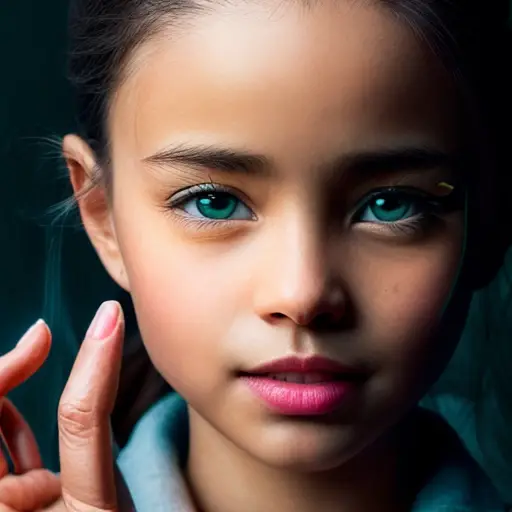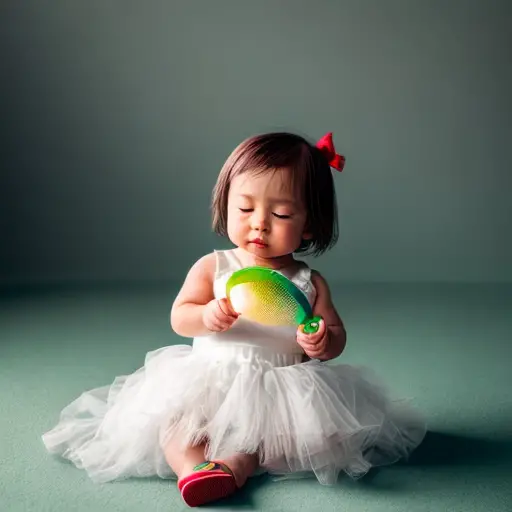Understanding Hand-Eye Coordination: A Key Milestone in Child Development
Hand-eye coordination, the magical ability that allows children to catch a ball without smacking themselves in the face, is truly a remarkable milestone in their development. It's like witnessing a clumsy magician transform into a graceful acrobat right before your eyes. As parents, we cheer on our little ones as they fumble and stumble, their tiny hands desperately trying to connect with their wandering eyes. It's a hilarious dance of trial and error, where objects are dropped, glasses are knocked over, and the occasional pet becomes an unwilling participant in this chaotic circus. But fear not, fellow parents, for this seemingly comical struggle is an essential part of their growth. Through countless attempts and countless laughs, our children master the art of hand-eye coordination, paving the way for future accomplishments like tying shoelaces, playing musical instruments, and even conquering video games. So, let's embrace the hilarity and celebrate this wobbly journey towards coordination greatness!
The Science Behind Hand-Eye Coordination: How Children Learn to Coordinate Their Movements
An interesting fact about hand-eye coordination in child development is that it is not solely dependent on genetics, but can be significantly improved through practice and experience. While some children may naturally have better hand-eye coordination, others can enhance their skills through activities such as playing sports, drawing, building with blocks, or even playing video games. This highlights the importance of providing children with a variety of opportunities to engage in activities that promote hand-eye coordination, as it can have a positive impact on their overall motor skills and cognitive development.
Hand-eye coordination, the intricate dance between our hands and our eyes, is a fascinating scientific phenomenon that unfolds during a child's development. It's like witnessing a symphony of neural connections, as the brain orchestrates the precise timing and synchronization required for successful coordination. Through a series of complex processes, children learn to track moving objects with their eyes, interpret visual information, and send signals to their muscles to execute precise movements. It's a delicate balance of visual perception, motor skills, and cognitive processing, all working together to achieve those awe-inspiring moments when a child effortlessly catches a flying ball or threads a needle with precision. So, let's marvel at the wonders of this scientific masterpiece and appreciate the incredible journey our children embark on as they master the art of hand-eye coordination.
The Importance of Hand-Eye Coordination in Early Childhood: Implications for Cognitive and Motor Skills

Hand-eye coordination, the ability to synchronize our visual perception with our motor skills, plays a crucial role in early childhood development. It serves as a foundation for the acquisition of both cognitive and motor skills, setting the stage for future learning and achievement. When children engage in activities that require hand-eye coordination, such as building blocks or playing catch, they are not only honing their physical abilities but also enhancing their cognitive functions.
From a cognitive perspective, hand-eye coordination helps children develop their visual perception and spatial awareness. As they learn to track moving objects with their eyes and coordinate their hand movements accordingly, they are strengthening their ability to process visual information and make sense of their surroundings. This skill becomes particularly important when it comes to tasks like reading, writing, and problem-solving, as it allows children to efficiently process and interpret visual stimuli.
In terms of motor skills, hand-eye coordination is essential for the development of fine motor skills, which involve precise movements of the hands and fingers. Activities like drawing, coloring, and using utensils require children to coordinate their hand movements with their visual focus, promoting the development of dexterity and control. These skills are not only crucial for everyday tasks like buttoning a shirt or tying shoelaces but also for more complex activities like playing a musical instrument or participating in sports.
Furthermore, the development of hand-eye coordination in early childhood has been linked to improved hand-eye coordination in later stages of life. Research suggests that children who have well-developed hand-eye coordination during their early years are more likely to excel in activities that require precise hand-eye coordination in adolescence and adulthood. This highlights the long-term implications of nurturing this skill from an early age.
In conclusion, hand-eye coordination is a fundamental aspect of early childhood development with far-reaching implications. By engaging in activities that promote hand-eye coordination, children not only enhance their cognitive and motor skills but also lay the groundwork for future learning and success. As parents and educators, it is important to provide opportunities for children to practice and refine their hand-eye coordination, fostering their overall development and setting them up for a lifetime of achievement.
Nurturing Hand-Eye Coordination: Strategies and Activities to Support Healthy Development in Children
Fun fact: Did you know that hand-eye coordination in child development is not only important for activities like catching a ball or playing video games, but it also plays a crucial role in developing reading skills? Research suggests that the ability to track moving objects with their eyes and coordinate their hand movements accordingly helps children learn to read more efficiently. So, next time you see a child playing a sport or engaging in a game that requires hand-eye coordination, remember that they are also sharpening their reading skills!
Nurturing hand-eye coordination in children is a key aspect of their overall development. There are various strategies and activities that can support the healthy development of this skill. Encouraging activities that involve hand-eye coordination, such as throwing and catching games, puzzles, and building blocks, can provide opportunities for children to practice and refine their abilities. Additionally, incorporating activities that require fine motor skills, such as drawing, painting, and playing with small objects, can further enhance hand-eye coordination. Providing a safe and stimulating environment where children can explore and manipulate objects of different shapes, sizes, and textures can also contribute to the development of this skill. By actively engaging children in these activities and providing them with the necessary tools and resources, we can support the healthy development of hand-eye coordination and set them on a path towards success.

